-
CATEGORY ::
- All Seeds /
- All Grass Seed


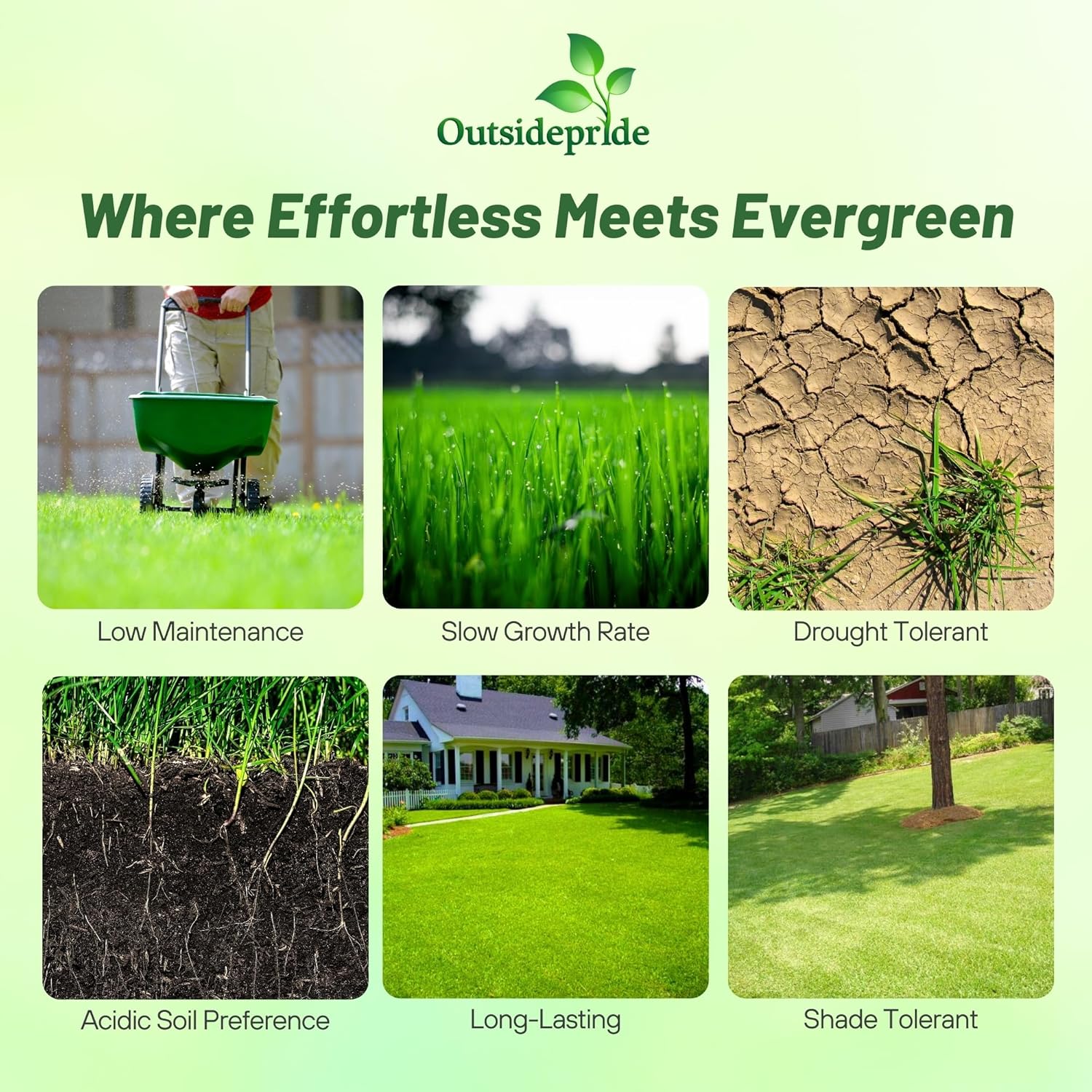
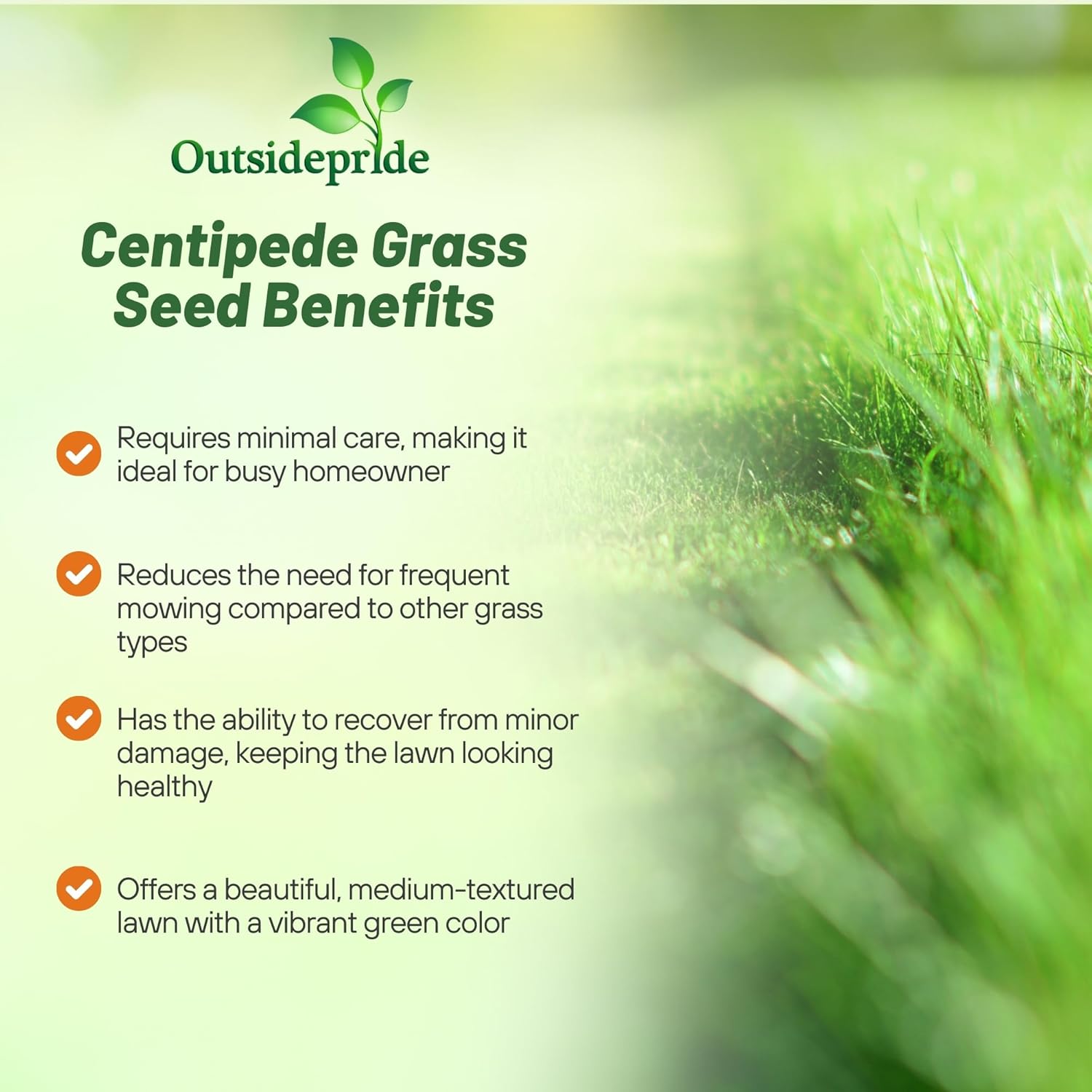
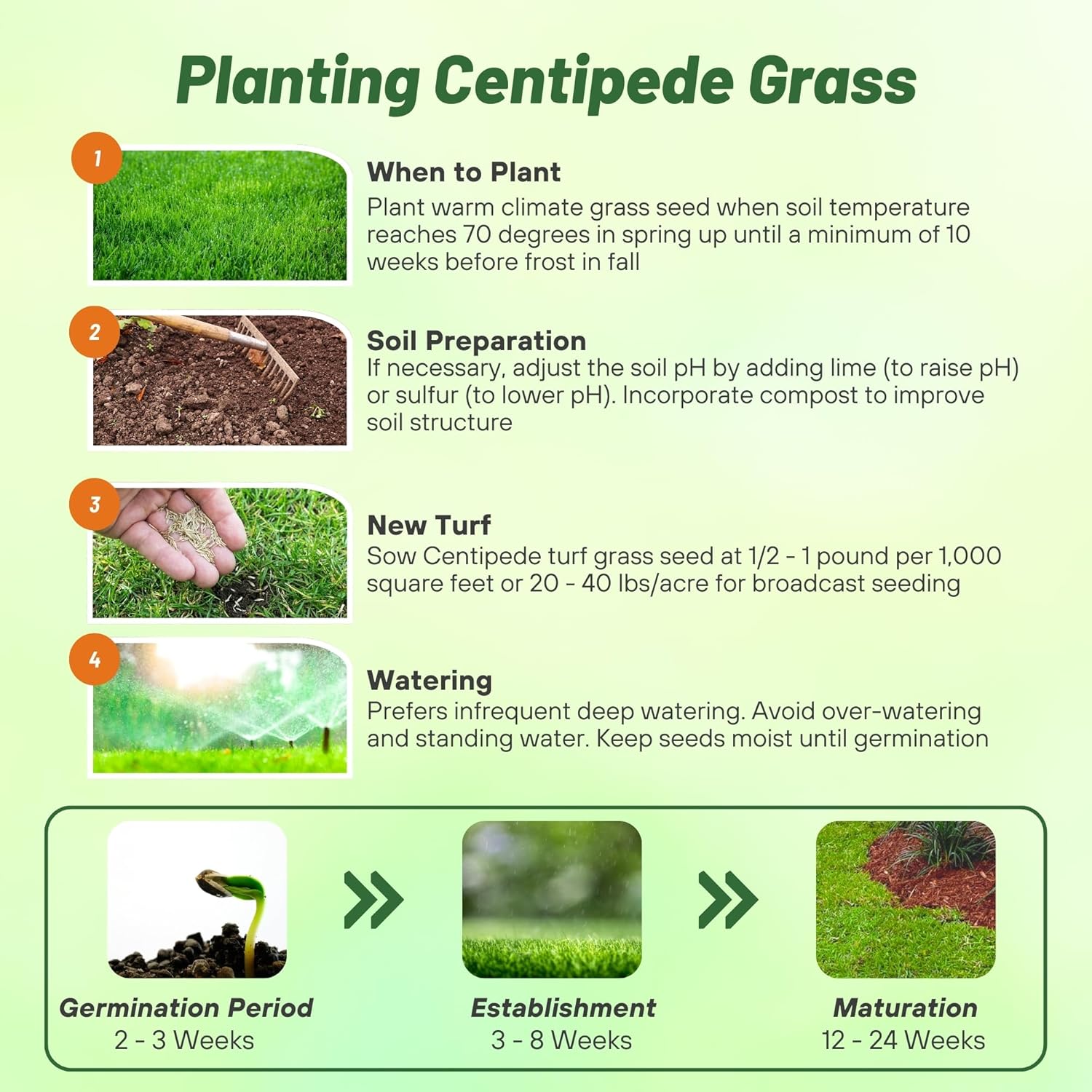






Centipede Grass Seed
About...
Centipede turf grass is slow-growing grass but aggressive enough that it can be depended upon to produce a good, dense, relatively weed-free turf at low maintenance levels. Known by many as Lazy Man's Grass, Centipede grass seed usually produces a good turf at low fertility and with little management, but it responds nicely to good care.
MORE GRASS OPTIONS

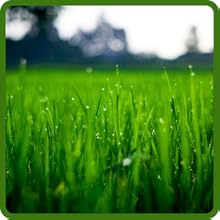
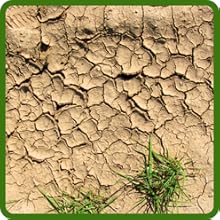
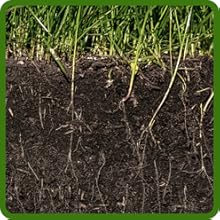


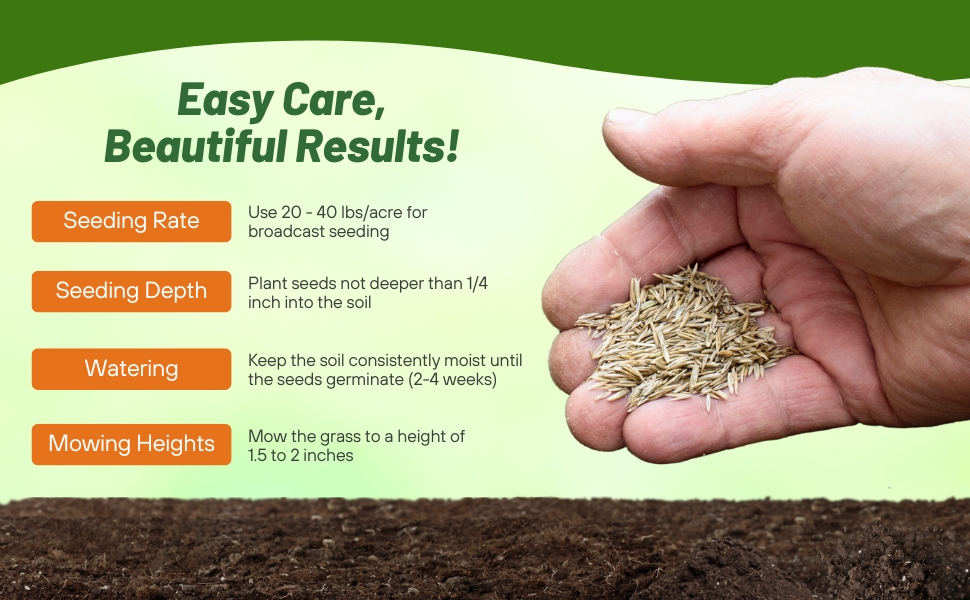
Centipede Grass: a slow growing, apple-green, coarse leaved turf grass that is used for a low maintenance, general purpose turf. It requires little fertilizer, infrequent mowing, and will tolerate moderate shade if it receives at least four hours of full sun a day. Over fertilizing to obtain an unnatural dark green color reduces its cold tolerance and usually increases long-term maintenance problems. Centipede grass is slow-growing grass but aggressive enough that it can be depended upon to produce a good, dense, relatively weed-free turf at low maintenance levels. In spite of its spreading growth habit, Centipede grass is easily controlled and usually requires edging only once a year around walks and flower beds.
Known by many as Lazy Man's Grass, Centipede grass seed usually produces a good turf at low fertility and with little management, but it responds nicely to good care. It is incapable of producing as high quality turf as the Bermuda and Zoysia grasses, but it frequently looks better than either because the "high-brow" grasses are not getting the more exacting care they need.
Centipede Grass Characteristics
- Easiest of all the grasses to cut
- Reel or rotary mower, if sharp, does an easy and attractive cutting job
- Does not look scalped when cutting is delayed too long and excessive growth removed
- Greens up rapidly after a brief drought with irrigation or rainfall
- Suited to acid soils (pH range of 5.0 to 6.5)
- Should be fertilized very sparingly
- Generally more trouble-free than other grasses if watered properly and fertilized sparingly or not at all
With a worldwide reputation for providing attractive lawn cover with the lowest maintenance requirements of any grass grown, growing Centipede grass is the lazy man's grass of preference. This shade and drought tolerant pale green turf is the dominant turf grass in lawns of the mid-south.
When Centipede grass is healthy it can be dense enough to keep out weeds and other grasses. In the south this grass will remain green throughout the year. Although the roots are not as deep as Bahia or Bermuda, its close to the ground growth allows for better conservation of water and helps fight drought.
Centipede Grass Care and Maintenance
Fertilizer
Apply between 1 and 2 pounds of nitrogen per 1000 sq. feet annually, during the growing season. Select a fertilizer that is labeled for use on Centipede lawn grass and contains iron. Do not apply fertilizer to wet turf to avoid burning. Too much fertility will result in a thatch laden and unhealthy lawn. Do not apply lime without a soil test to see if your soil is too acidic.
Mowing
Mow between 1 to 2 inches high. Catch and remove clippings. Never remove more than 1/3 of the leaf at any one cutting. Always use a sharp blade. Can be mowed with either reel or rotary mower.
Watering
Though drought tolerant, Centipedegrass prefers infrequent deep watering. Do not over-water (avoid standing water for any period of time). When planting Centipede lawn seed, ensure that the grass seed stays moist until germination.
Thatch Removal
Periodically it may be necessary to remove accumulated thatch and debris. This is best accomplished in the late winter - just before Centipede turf turns green. Scalp or rake heavily and remove debris.
Weed Control
Centipede grass has an open growth that can encourage the weed population to grow. Use of a pre-emergent herbicide, recommended for use on Centipede lawns on the label, is strongly recommended in the spring and fall.
Pest Control
Pests can become a problem, especially if Centipede grass is not growing in a healthy way - too much or too little fertilizer or water, etc. If pests persist, contact the local county agent or nursery owner and ask for assistance in identification of the problem and the recommended control.
Centipede Grass Seeding Rate & Planting Time
- New turf: Sow Centipede turf grass seed at 1/2 - 1 pound per 1,000 square feet or 20 - 40 lbs/acre for broadcast seeding
- Plant warm climate grass seed when soil temperature reaches 70 degrees in spring up until a minimum of 10 weeks before frost in fall
Planting Guide
SOWING TEMPERATURE
70F+
WHEN TO PLANT
Spring 70F or up to 10 weeks before first frost
AVERAGE GERM TIME
10 - 21 days
DAYS TO FIRST MOWING
45 - 60+ days
PLANTING DEPTH
Surface to 1/4 Inch
SOWING METHOD
Broadcast or Drill
MOWING HEIGHT
1 - 2 inches
ENVIRONMENT
Light Shade to Full Sun
ZONES
7 - 10
Grass Specifications
IDEAL FOR
Lawns, Low Maintenance Areas
PLANT CHARACTERISTICS
Dense, Low Maintenance
ESTABLISHMENT RATE
Slow
MOISTURE REQUIREMENTS
Low
ACIDIC SOIL TOLERANCE
High
SALINITY TOLERANCE
Moderate
COLD TOLERANCE
Medium
SHADE TOLERANCE
Moderate to Good
WEAR TOLERANCE
Low
THATCH TENDENCY
Medium
FERTILIZER NEEDS
Low
SEASON
Perennial
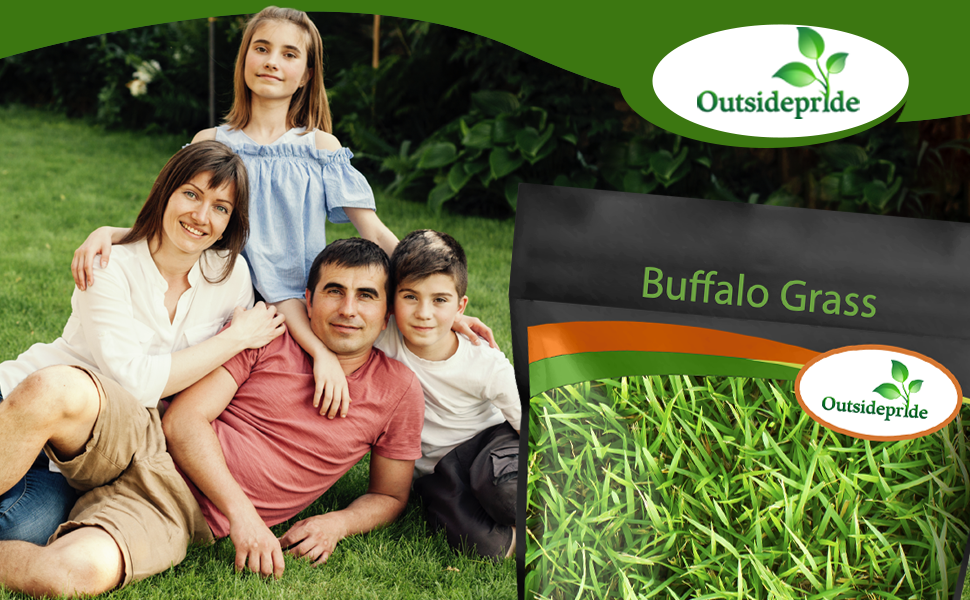
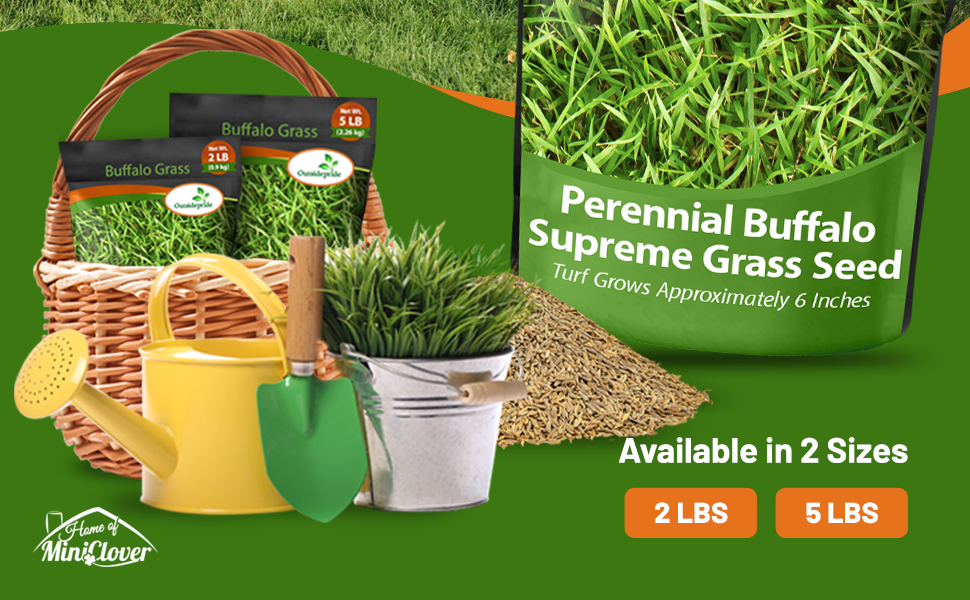
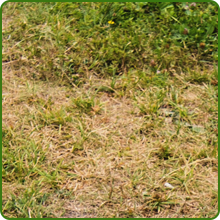
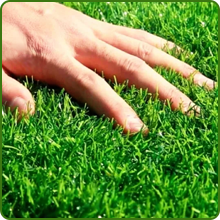

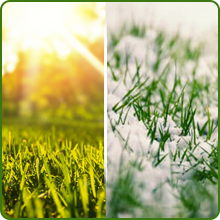

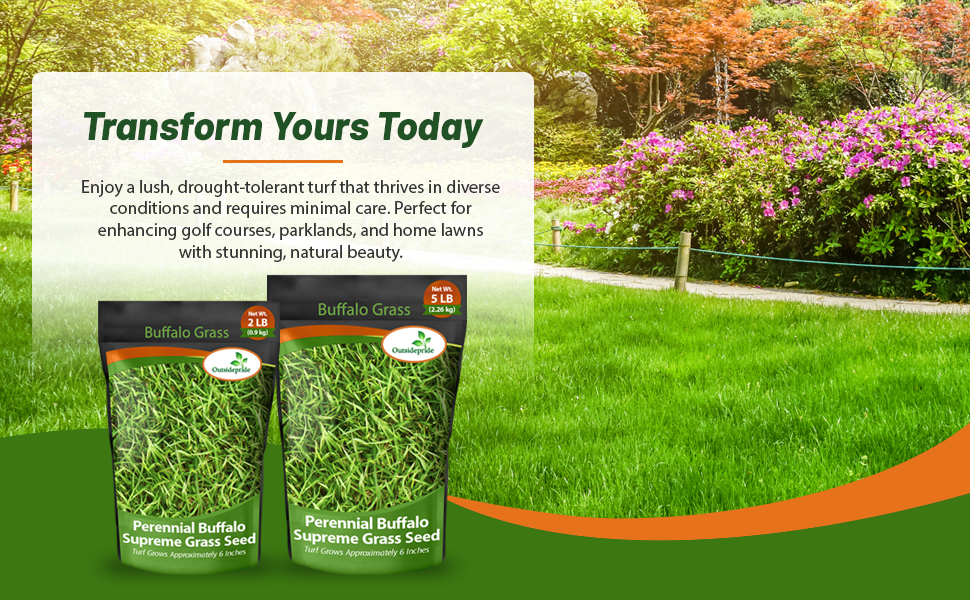
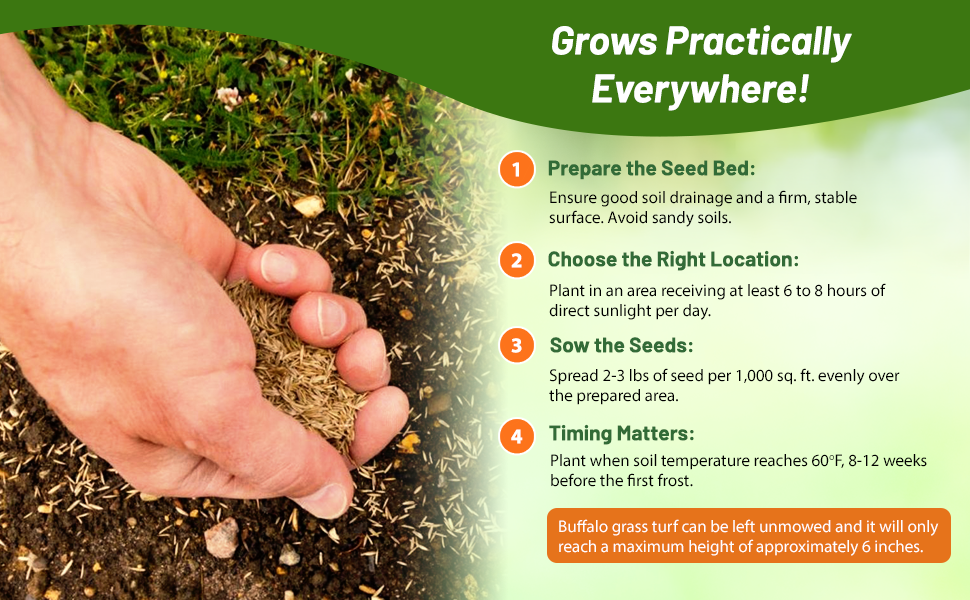
Buffalo Supreme grass seed contains Sundancer certified Buffalo grass which is a one of the leaders in the market today and is designed to create a better turf density. Buffalo grass seed can be used for natural looking golf course roughs, roadside plantings, airport landscaping, parkland, and of course home lawns where low maintenance is desired. In fact, Buffalograss turf can be left unmowed and it will only reach a maximum height of approximately 6 inches. Supreme Buffalo grass seed is a great choice for creating a natural, drought tolerant turf that requires few inputs and is easy-to-maintain which is perfect for xeriscaping.
This Buffalo Supreme grass seed is dense enough to reduce weed encroachment, due to its excellent stolon development and some rhizomes which spread across the ground to create new Buffalo grass and keep weeds out. However, if you are looking for a prairie meadow look and want to add wildflowers to your Buffalograss blend, no problem! You do not have to mow Buffalo grass; however, mowing once or twice a year to remove old growth in early spring or late summer, will produce the best results and keep these low maintenance areas looking their best. For greater turf density, mow more frequently. The more you mow, the more dense the turf becomes and will produce a fairly dense sod and a high quality turf that is extremely drought and heat tolerant.
Sundancer Buffalo Grass
Introducing Sundancer, the most advanced Turf-Type Buffalograss available to the turf industry today! This new variety fills the demand for a warm season turf with accelerated establishment and superior turf quality from seed. Sundancer is widely adapted and has proven itself a premium turf, suited to a variety of diverse environments. Once established, Sundancer outperformed the other entries for turfgrass quality, color, spring green-up and canopy density. Sundancer is a broadly adapted seeded buffalograss and is an example of the advancements made in buffalograss cultivar development through strategic breeding efforts.
In a three year trial at locations in AZ, CO, KS, NE, NM, UT, VA, and WA; Sundancer ranked first in all categories. Side by side comparisons with other commercially available varieties showed Sundancer a step above the rest.
- Faster Establishment from Seed (Similar to KY Bluegrass)
- Dark Green Color
- Disease & Insect Resistance
- Early Spring Green Up & Fall Color Retention
- Enhanced Density and Fine Leaf Texture
- Broad Adaption
- Lower Plant Height
- Extreme Drought Tolerance
- Low Water & Nitrogen Usage
- Winter Hardiness
- Lateral Spread by Stolons
- Low Growth Habit
Sundancer should be planted in locations receiving at least 6-8 hours of direct sunlight each day. Clay based or heavy soils are preferred. Sandy soils may require amendments to aid establishment. Results may vary over 5,000 ft. elevations. Use Sundancer for residential lawns, commercial sites, parks and rec areas, golf courses, medians, or anywhere an attractive low maintenance turf is required!
Buffalo Grass Requirements
- Grows best in areas receiving at least 6 to 8 hours direct sunlight per day
- Good soil drainage is essential
- Not suited to sandy soils
Buffalo Grass Establishment
- Seeding date: Plant the Buffalo grass seed blend when sustained soil temperature reaches 60 degrees and minimum of 8 - 12 weeks before frost
- Seeding rate: Sow 2 - 3 lbs Supreme Buffalo grass seed per 1,000 sq. ft. into a firm seed bed. Buffalo seed can take 15 - 21 days to start germinating.
- Seeding depth: 0.25 to 0.5 inches deep
- Keep soil moist through emergence
- Apply 0.75 lb N/1,000 sq. ft. with starter fertilizer
- Weed control: Plant native Buffalo grass seed into weed free seed bed. Keep turf mowed frequently to reduce competition from weeds and encourage the tiller growth and spreading of Buffalo grass. Apply Drive 75 DF Herbicide.
Buffalo Grass Mowing
- 2 to 4 inches for home lawns
- Low maintenance areas may be mowed taller or not at all
- Frequency is affected by amount of watering and fertilizer
- Avoid removing more than one-third the turf height at any one mowing
Buffalo Grass Watering
- Deep soak with no less than 1 inch once a month from July to September for higher maintenance areas, depending on natural precipitation.
- Soak soil before winter if soil is dry
- Occasional or no watering for low maintenance areas due to its superio drought tolerance
- Keep Supreme Buffalo grass seed moist until it germinates
Buffalo Grass Fertilizing
- First application - 3 weeks after green up
- Second application - 8 weeks later
- 1 to 3 lbs actual nitrogen/1,000 sq. ft/season
- Less on low maintenance and natural areas
- Use higher rates for best quality
Buffalo Grass Weed Control
- Avoid frequent watering, short mowing and over fertilization
- Minimize early season watering
- Control broadleaf weeds in the fall and/or spring
- Apply pre-emergent in the spring for grassy weeds
- Don't use a pre-emergent if planting Buffalo grass seed
- Many cool season weeds can be controlled with Round-up when Buffalo grass is dormant. Round-up must be applied prior to Buffalo grass breaking dormancy in spring.
Certification
The Grass Seed Certification program establishes the genetic purity and germination of varieties, blends, and mixtures. The certification process begins with the proper field history before production and continues through the bagging of a grass seed lot with every step independently verified by Seed Certification personnel. Each buffalo grass seed lot to be certified is sampled by Certification personnel and tested in the state seed laboratory, so the grass seed you buy is the seed that was tested If even one standard in this process failed, the lot is uncertified. You can rest assured that your buffalo grass seed is certified!
Planting Guide
SOWING TEMPERATURE
60F+
WHEN TO PLANT
Spring 60F or up to 10 weeks before first frost
AVERAGE GERM TIME
14 - 21 days
DAYS TO FIRST MOWING
30 - 45 days
PLANTING DEPTH
1/2 to 1 Inch
SOWING METHOD
Broadcast or Drill
MOWING HEIGHT
2 - 2.5 inches
ENVIRONMENT
Full Sun
ZONES
3 - 10
Grass Specifications
IDEAL FOR
Golf Course Roughs, Roadside Plantings, Parkland, and Lawns
PLANT CHARACTERISTICS
Low Maintenance, Drought Tolerance
ESTABLISHMENT RATE
Slow
MOISTURE REQUIREMENTS
Low
ACIDIC SOIL TOLERANCE
Low
SALINITY TOLERANCE
Moderate
COLD TOLERANCE
High
SHADE TOLERANCE
Low
WEAR TOLERANCE
Low
THATCH TENDENCY
Low
FERTILIZER NEEDS
Low
HEIGHT
4 - 6 inches
SEASON
Perennial



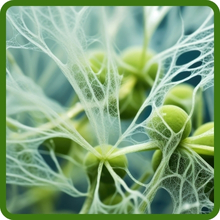


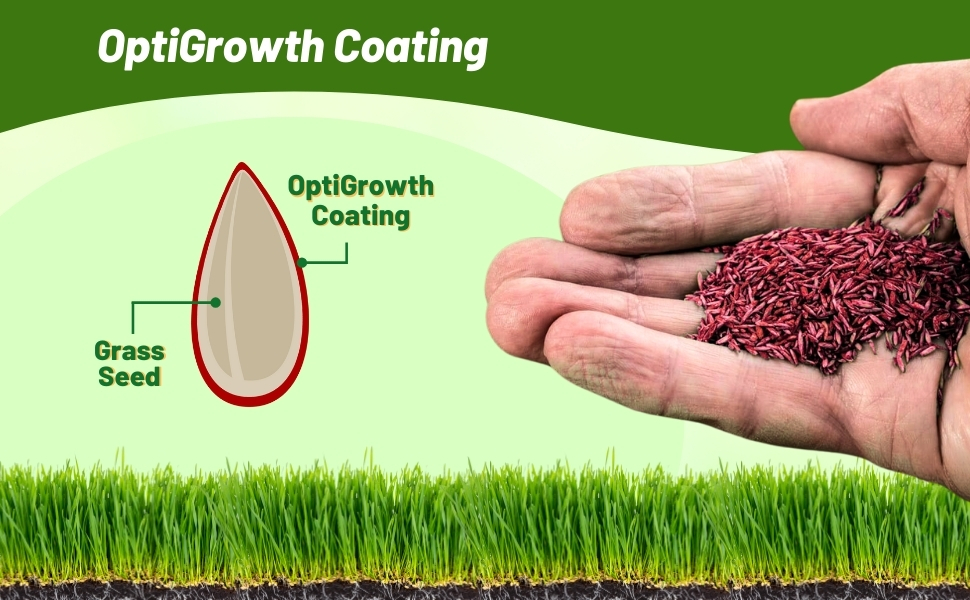
Fireball/Hattrick Ryegrass Seed Blend (Lolium perenne) - this perennial rye grass blend was developed for those wanting the darkest green lawn available. This 50/50 blend of Fireball and Hattrick forms a lush, dark green, soft, carpet like lawn. Fireball ranked #1 and Hattrick ranked #3 in the NTEP (Natialional Turfgrass Evaluation Program). In addition, this rye grass has superior seed quality, with a “Poa–free” tag based on extended seed testing so you are not planting your problems. The cultivars used exhibit rapid establishment, stress and disease tolerance, cool weather active growth, wear tolerance and recovery. They demonstrated high overall performance under various maintenance levels ranging from golf course fairways to residential lawns.
The range of performance of this ryegrass blend make it ideal for all perennial ryegrass uses. The components of this rye grass blend have been selected for excellent traffic tolerance which makes it superior for use on sports fields, as well as parks. The high summer performance due to its drought and stress tolerance make it ideal for permanent turf. Yet Fireball/Hattrick rye grass blend has also shown excellent performance as a grass for overseeding bermuda grass with superior winter growth. Excellent germination and growth with saline water enable this rye grass seed blend to be used in marginal sites.
Disease Resistance: The cultivars in this rye grass blend exhibit high levels of Gray Leaf Spot resistance and are also resistant to many other important turf diseases, including: Crown Rust, Winter Net Blotch, Dollar Spot, Red Thread and Brown Patch. The broad genetic base insures high resistance against a broad range of diseases for consistent performance.
Endophyte-Enhanced: This rye grass seed contains high levels of viable endophytes. This provides resistance to a large number of surface and crown feeding insects including billbugs, sod webworms, chinch bugs and armyworms. The presence of endophytes also contributes to increased stress tolerance with better summer survival and enhanced fall recovery.
Features:
- Superior seed quality "Poa Free"
- High Gray Leaf Spot resistance
- Excellent wear tolerance
- Fine leaf texture and dark green color
- Excellent seedling vigor
- Superior seedling and mature plant salt tolerance
- Excellent for permanent turf and overseeding warm-season grasses
- Uses: Golf courses, sports fields, parks, schools and commercial landscaping
Benefits:
- Rapid establishment to outcompete Poa annua and other weeds
- Disease resistance results in fewer fungicide applications
- High levels of viable endophyte for insect control
- Reduced inputs and lower maintenance costs
- Widely adapted due to broad genetic base
- Rapid tillering, spreading varieties for excellent wear tolerance
Seeding Rate of Rye Grass & Planting Time:
- New turf: Sow 8 - 10 pounds Rye grass lawn seed per 1,000 square feet or 320 - 400 lbs/acre for broadcast seeding
- Over-seeding: Sow 4 - 5 pounds Ryegrass seed per 1,000 square feet or 160 - 200 lbs per acre for broadcast over-seeding
- Plant this perennial Ryegrass seed blend when soil temperature reaches 55 degrees in spring up until a minimum of 6 weeks before frost in fall
- Germination: Rye grass turf seed will emerge in 3 - 10 days under proper conditions. First mowing is typically 2 - 3 weeks after emergence
Planting Guide
SOWING TEMPERATURE
55F+
WHEN TO PLANT
Spring 65F or up to 5 weeks before first frost
AVERAGE GERM TIME
6 - 14 days
DAYS TO FIRST MOWING
21 - 30 days
PLANTING DEPTH
Surface to 1/8 Inch
SOWING METHOD
Broadcast or Drill
MOWING HEIGHT
2 - 2.5 inches
ENVIRONMENT
Full Sun
ZONES
3 - 7
Grass Specifications
IDEAL FOR
Lawns, Golf courses, Sports Fields, Parks, Schools and Commercial Landscaping
PLANT CHARACTERISTICS
Fine Bladed, Dark Green, Wear Tolerant
ESTABLISHMENT RATE
Fast
MOISTURE REQUIREMENTS
Moderate to Hiigh
ACIDIC SOIL TOLERANCE
Medium
SALINITY TOLERANCE
Poor to Moderate
COLD TOLERANCE
Medium
SHADE TOLERANCE
Poor to Moderate
WEAR TOLERANCE
High
THATCH TENDENCY
Low
FERTILIZER NEEDS
Medium
SEASON
Perennial
Each fall, new growth reemerges from the underground bulbs. RHb ground cover thickens and increases in density each year as the bulbs strengthen and proliferate underground during every growing season.
- RHb produces a barrier in the soil profile trapping and retaining moisture through the summer months, allowing the fruit or nut crop access to more water when needed most.
- RHb reduces costs by removing the need to reseed and manage an annual or bi-annual cover crop, removes the need for summer tillage, and significantly reduces mowing frequency.
- RHb improves soil health and resiliency in vineyards but does not compete for water and nutrients when the vines or trees are actively growing.
- RHb improves the carbon sequestration of vineyards and orchards by completely removing the need for tillage in drive rows and orchard floors.
Vineyard & Orchard Seeding
The best practice for seeding RHb products for a perennial ground cover is to plant into a well-prepared (top 2 inches loosened but compact) soil bed in September thru November. Spread your RHb seed bulblets as evenly as possible with a Brillion-type seeder for best seed-to-soil contact; or a broadcast spreader, followed by a drag or roller.
Seed 150 - 200 lbs per Acre at 1/4 inch depth. Any deeper seeding will reduce establishment. Add 65 lbs. N per Acre of a time-released fertilizer blend such as 20-15-15. Your RHb will germinate when night temperatures drop to around 50, and there is adequate moisture. It will produce a low growing carpet of green. In the spring (mid-March to mid-April it will go comprehensively dormant with longer day length and warmer temperatures. It will stay dormant all summer and will only re-emerge around the fall equinox when cooler temperatures, shorter day lengths, and adequate moisture are available.
To maintain a healthy stand of RHb for years to come:
- Mow your stand in the spring at a height of 1inch before volunteer weeds have gone to seed. If there are many weeds competing in the establishment year, you may need to mow more frequently during the winter. In subsequent years it may only need to be mowed once a year, focusing mainly in the spring after the seed heads have emerged but before the RHb goes dormant (mid-late March).
- For best long-term performance, roll the seeded drive rows or understory once every mid-winter. Fertilize every fall after re-emergence of your RHb for strong, healthy re-emergence. Use time-released fertilizer such as 20-15-15 at the rate of 22 pounds per Acre
- Generally in February, if there are competing broadleaf weeds they can be sprayed out while the vines and trees are dormant in winter. If there are tall grass weeds they can be mowed during the winter at 1 inch height until they go dormant or die.
Winter Turfgrass Overseeding
Winter overseeding with RHb products into dormant or transitioning bermudagrass will give you a perennial, cool-season turf stand. Ryegrasses have historically been the primary winter overseeding species, with the inconvenience of required re-seeding every fall and failure to fully transition out in the spring. Using RHb as your winter overseeder one time may result in minimal or no further overseeding needed for many years. RHb generates bulbs underground that go to sleep in the spring (similar to flower bulbs). These bulbs lie dormant in and among the active Bermuda grass roots during the warm season. In the fall, with cool temperatures, proper moisture, and shorter day lengths these bulbs re-emerge from their deep slumber. They will re-establish every winter and slowly grow more underground bulbs that naturally thicken your stand. This product is perfect for exclusive winter turf. You can leave it all up to the natural rainfall, without watering, in many places.
The best practice for overseeding RHb into bermudagrass for your winter lawn is to wait until October (or when night temperatures drop to around 50). Then mow the Bermuda grass down as short as possible to open up the stand and allow better seed-to-soil contact. You may also de-thatch to further improve contact with soil. Spread your RHb seed bulblets as evenly as possible. Plant 10-12 pounds of RHb seed bulblets per 1,000 square feet area. Add ½ pound Nitrogen per 1,000 square feet area of a complete fertilizer blend such as 10-10-10.
- Add 1/4 inch layer of any type mulch on top of the seeds. This helps hold moisture for better germination; it helps hold seeds in original place if excess rain comes during establishment; and reduces loss of seeds to birds. Do not mulch cover any deeper than 1/4 inch it will slow establishment.
- If you are watering it up, keep the seed level moist! Watering as needed each time, for the first 3 weeks to allow proper germination and establishment is recommended. After then, reduce the frequency of watering while increasing the watering time of each application for deeper, stronger roots. By mid-winter, adjust watering schedule lower, if evaporation and natural rainfall levels allow.
Maintain a healthy stand of RHb throughout the winter by scheduled fertilizations once a month. Use a balanced mix such as 10-10-10 at the rate of 1/2 pound Nitrogen per 1,000 square feet area. Keep mowing height at 1/2 - 2 inches. During the warm season when your RHb is dormant and your Bermuda grass is active, DO NOT overwater or over fertilize your Bermuda grass stand; use deeper, infrequent waterings. When the next October-November arrives, mow low (1 inch or less) or de-thatch your Bermuda grass, and irrigate your RHb stand out of dormancy if it has not already received ample rainwater to re-emerge.
Latest News:
- Newest Research Reveals RHb Benefits for Corn Production - Patrick Galland authors new research from Iowa State University compiling benefits of RHb in corn production: "The Effects of Perennial Groundcover on Soil-Water and Nutrient Dynamics in Maize Intercropping Systems." Iowa State
- Research from UC Davis Provides a Peek at RHb Benefits for Vineyard Production - UC Davis presents to the American Society for Horticultural Science: "Cover Crops and Tillage Effects on Grapevine Physiology." UC Davis
- Data From from Iowa State University on Corn Yield - RHb Increase Corn Height & Yield Under Drought: Iowa State University































